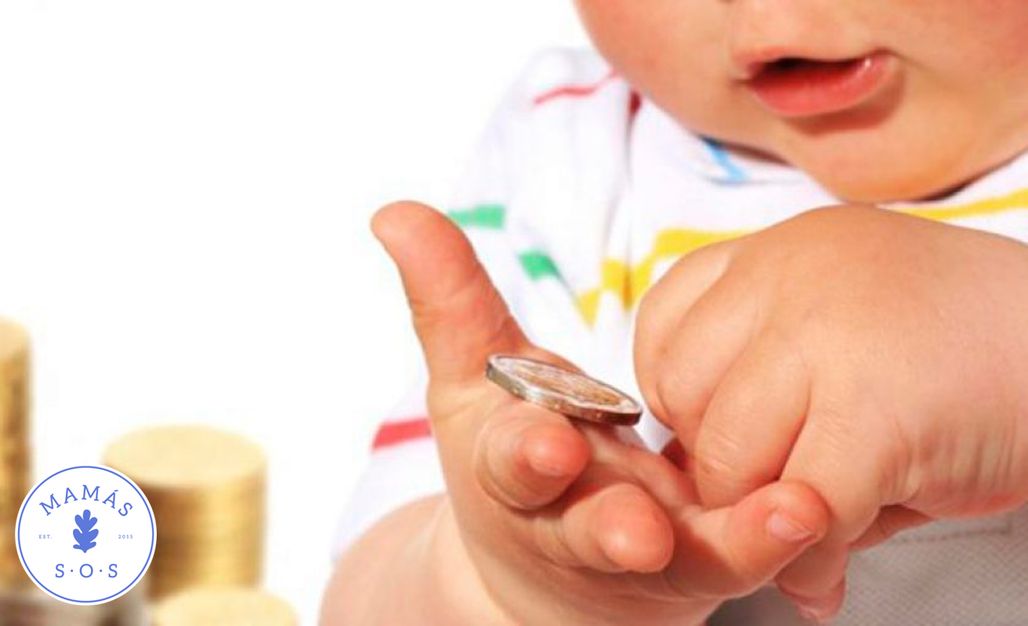3 out of 10 children inhale or ingest foreign bodies, which corresponds to one of the main preventable causes of death in children under 3 years of age.
Choking episodes can be prevented. The 50% of the episodes are caused by food. We must be attentive to small objects that can obstruct children's airway and cause suffocation. It is important to check that there are no small objects under the furniture and between the cushions that children can put in their mouths. The toys that children play with should be appropriate for their age.
Elements that can cause suffocation:
- Coins
- Buttons
- Toys with small parts
- Toys that can go completely into the child's mouth
- Small balls or marbles
- Balloons
- Hair bows, buckles, elastic bands
- Biromes or marker caps
- Button batteries
- Fridge magnets
- Dog food
Keep the following foods out of the reach of children under 4 years of age:
- Sausages (unless cut lengthwise before cutting into small slices)
- Nuts and seeds
- Raw carrot, celery, or peas
- Whole grapes or cherry tomatoes (unless cut in 4)
- Hard candies or gummies
- Popcorn
- Overly large pieces of meat, potato, cheese, raw vegetables, or fruits
- Chewing gums
Tips to prevent food-related choking:
- Cut the food into small pieces according to the age of each child. Encourage children to chew their food well.
- Monitor feeding times. Insist that children remain seated while eating. Do not allow them to run, walk or lie down with food in their mouth.
- Be on the lookout for older children. Many incidents occur when the oldest gives the youngest a dangerous toy or food.
What to do when a child chokes?
The most effective method of clearing the airway is coughing. Only if the child / baby does not have a cough or it is not effective, proceed as follows:
ATTACHMENT IN CONSCIOUS BABY
Verify that the baby cannot cough, cry, or breathe and ask someone to call 107.
- GIVE 5 HITS ON THE BACK: Place the baby face down on our forearm, holding him in such a way that his head is below the thorax and his mouth and nose appear between our fingers. Give 5 dry blows with the heel of the hand between the shoulder blades in the direction of the head, observing if the object is ejected. Once the object is in the mouth, remove it.
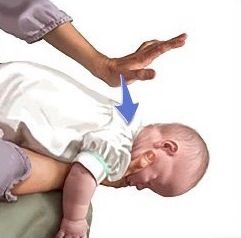
- GIVE 5 COMPRESSIONS ON THE CHEST: If the airway continues to be obstructed, turn it face up on our forearm and support its neck with your hand. With two fingers of the free hand, perform 5 compressions in the middle of the chest (just below the nipple line).
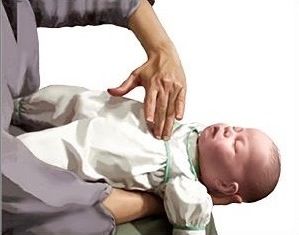
ADVICE: Firmly support the baby's head and neck when hitting the back and pressing on the chest. Keep the baby's head lower than your chest.
- CONTINUE CARING FOR THE BABY: Continue giving cycles of 5 back blows and 5 chest compressions until:
- The object is ejected.
- The baby may cough forcefully, cry, or breathe.
- The baby loses consciousness.
NEXT STEP… If the baby loses consciousness: carefully lay him down on the floor and begin CPR (30 compressions - 2 breaths). Between compressions and breaths, open the child's mouth, look for the object, and remove it if seen.
CONSCIOUS CHILD ATTRGAGEMENT
Verify that the child cannot cough, cry, or breathe and ask someone to call 107.
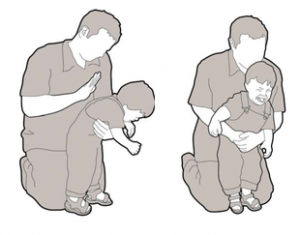
- Stand behind the child, standing or kneeling, depending on their size.
- GIVE 5 HITS ON THE BACK: Put one hand on the child's chest and with the other give 5 sharp blows between the shoulder blades, observing if he expels the object in any of them.
- GIVE 5 ABDOMINAL COMPRESSIONS: Get behind the child, adapting to his height. Make one hand into a fist and place the side of the thumb on the child's mid-abdomen, just above the navel. Cover the fist with the other hand. Give 5 quick compressions inward and upward.
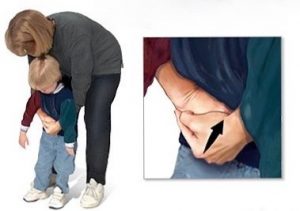
- CONTINUE CARING FOR THE CHILD: Continue giving cycles of 5 blows to the back and 5 abdominal thrusts until:
- The object is ejected.
- The child may cough forcefully or breathe.
- The child loses consciousness:
NEXT STEP… If the child loses consciousness: carefully lay him down on the floor and perform CPR (30 compressions - 2 breaths). Between compressions and breaths, open the child's mouth, look for the object, and remove it if seen.
It is advisable to do a First Aid course for parents where different CPR maneuvers are learned and more information is obtained on how to apply first aid in an emergency.
CONTACT INFORMATION:
www.facebook.com/babyblooming/
babybloominghomecare@gmail.com
This blog has been provided courtesy of Mamas SOS.
From Mamas SOS:
“Somos Delfi Roldán y Loli Barski amigas de la vida de hace más de 10 años. Pasamos muchos momentos juntas: vacaciones, salidas, viajes y hasta cada una fue testigo del casamiento de la otra. Hoy nos encontramos empezando a compartir ‘la maternidad.’ Delfi esta casada con Fran hace 5 años y es mamá de Oli (2 años y medio) y Félix (1 año) Loli esta casada con Nacho hace 1 año y espera a Toribio para Diciembre. Hace un par de meses que nuestras charlas no son de otra cosa que no sea bebés y tips de maternidad y embarazo. Por eso decidimos crear este espacio para compartir todos nuestros consejos y vivencias.”



